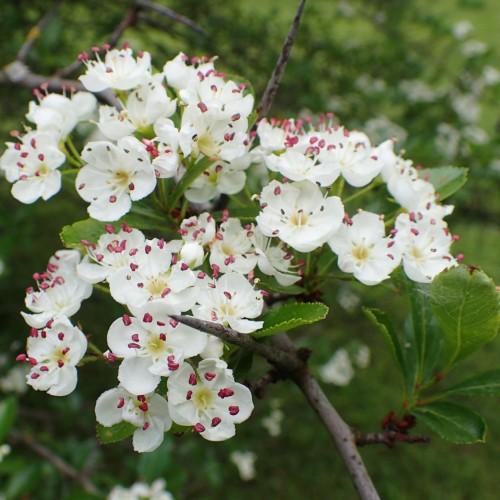
cockspur thorn
Crataegus crus-galli 'Cruzam' CRUSADER
Cycle:
Perennial
Watering:
Average
Hardiness Zone:
3 - 7
Flowers:
Flowers In Spring
Sun:
Full sun
Fruits:
Fruits Ready In Fall
Leaf:
Yes
Growth Rate:
High
Maintenance:
Moderate
Salt Tolerant:
Yes
Thorny:
Yes
Care Level:
Medium
watering
Cockspur Thorn plants should be watered regularly during the growing season, from May to August, when the soil has dried out approximately an inch down from the surface. Watering should be done slowly but deeply, to ensure that the entire root zone is moistened. To determine when the plant needs water, use a soil probe or simply poke your finger into the soil to a depth of 2 inches down; if it feels dry then it is time to water. Avoid saturating the soil, as this can cause root rot and other fungal diseases. In most climates, cockspur thorn plants should be watered about twice a week during these months. During the winter, when the plant is dormant, water only once a month or less.
sunlight
Cockspur thorn (Crataegus crus-galli 'Cruzam' CRUSADER) is a plant species that thrives in full or partial sun. It prefers 5-6 hours of direct sunlight per day to ensure maximum growth and blooms. For optimum health, it is best to plant in an area that receives a few hours of direct sun in the morning and dappled sun the remainder of the day. The sun should be intense enough to provide adequate warmth to the plant, but it should still be able to receive some respite in the shade. Direct sunlight is needed for the cockspur thorn to bloom, although it is not required for the plant to survive.
pruning
Cockspur thorn should be pruned in early spring, just before new growth begins. Pruning should be light, removing only dead, diseased or damaged branches. Additionally, some selective pruning may be done to maintain an ideal shape and balance to the plant. For younger plants, pruning should focus on height and shape, removing any shoots that are too tall or leggy in nature. Older plants may need more drastic pruning; if the overall shape and fullness is becoming sparse, a light renewal pruning can be used, cutting away 1/3 of the older branches at their base. Avoid shearing back the shrub, as this will create an unnatural appearance. Regular maintenance pruning should also be done once or twice a year to keep the shrub looking its best.
